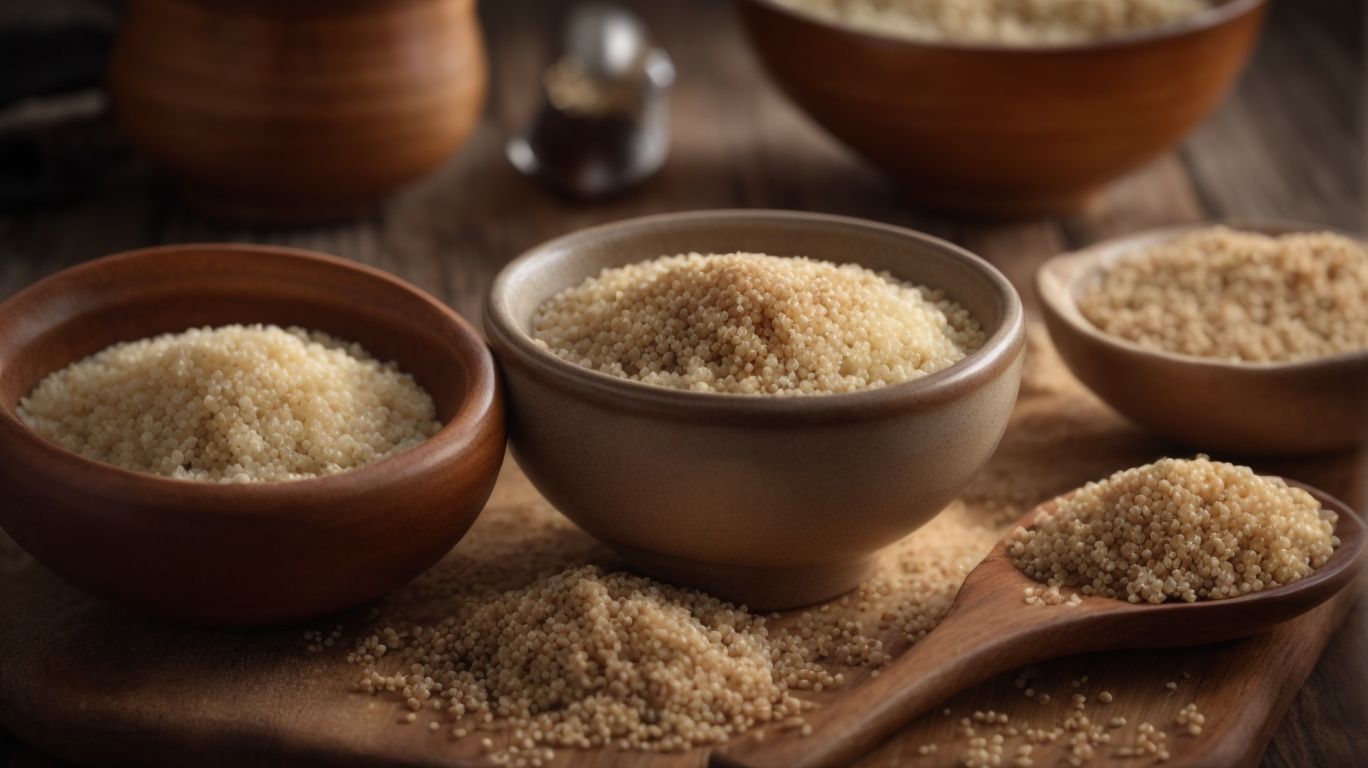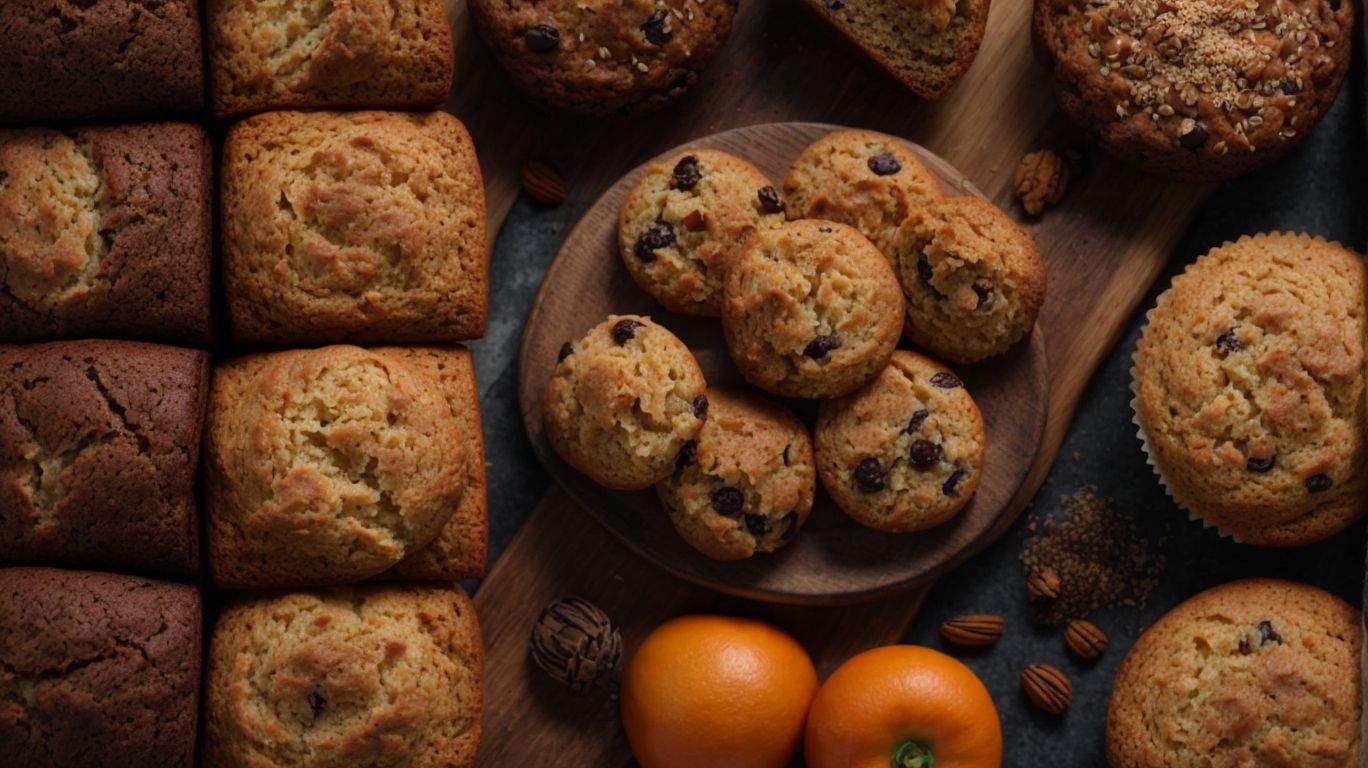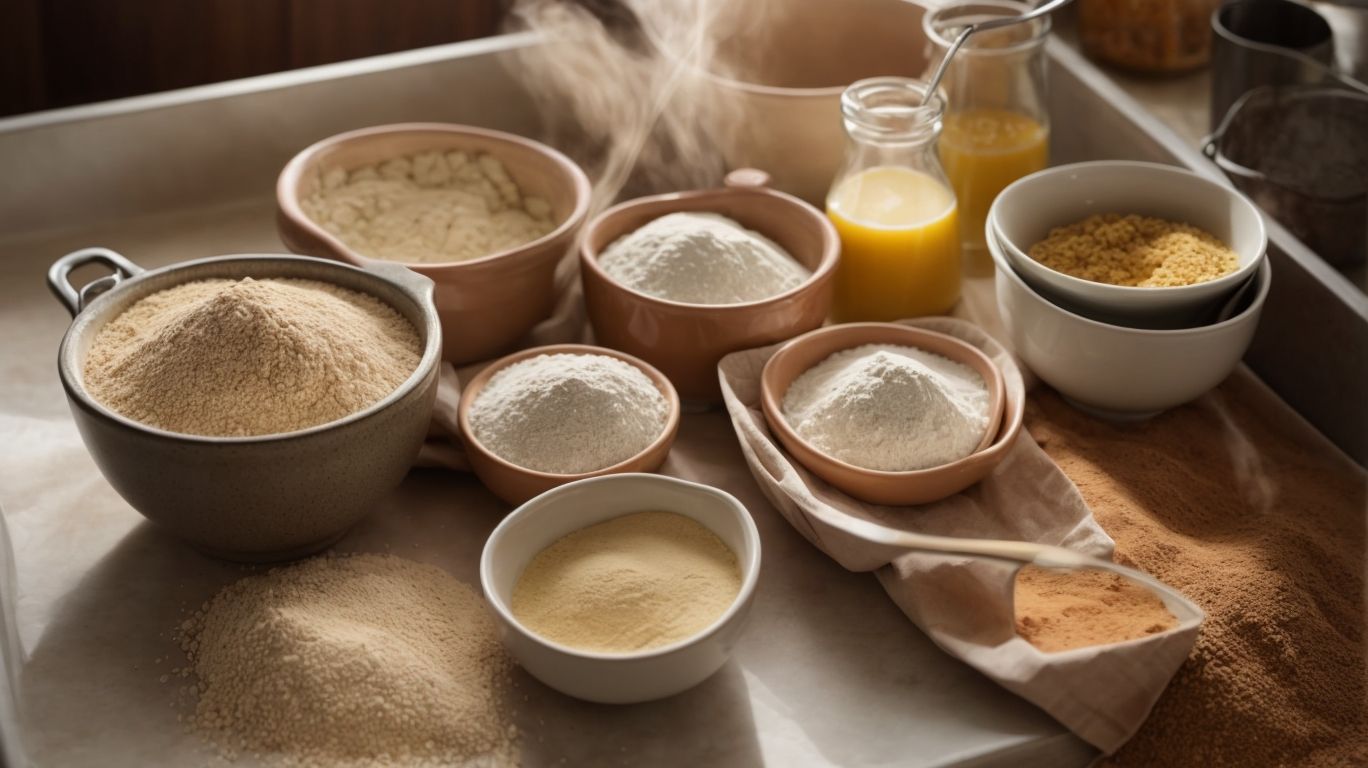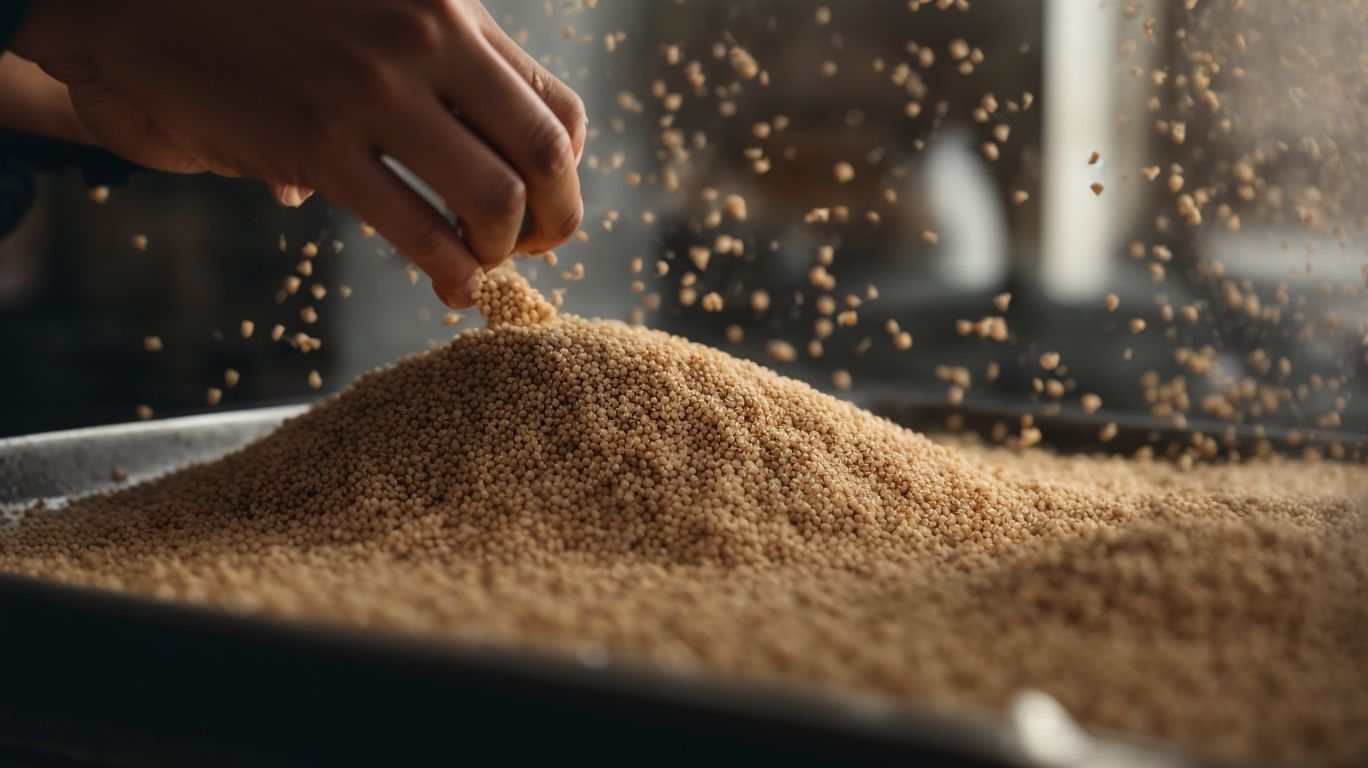How to Bake Quinoa?
Curious about quinoa and how to incorporate it into your baking? Look no further!
We will explore the wonders of quinoa – a popular grain that is not only nutritious but also versatile in the kitchen. From preparing and cooking quinoa to different ways of incorporating it into baking, we’ve got you covered.
Whether you’re using quinoa flour, cooked quinoa, or quinoa flakes, we’ll show you how to bake with them and provide helpful tips along the way. Let’s get baking with quinoa!
Key Takeaways:
What is Quinoa?
Quinoa is a versatile seed known for its nutritional benefits and gluten-free properties.
Originally cultivated by the Incas in the Andes mountains, quinoa has been a staple in South American diets for thousands of years. It is packed with essential nutrients such as protein, containing all nine essential amino acids that the body needs for growth and repair. Quinoa is an excellent source of fiber, aiding in digestion and promoting overall gut health. Rich in minerals like magnesium, zinc, and B vitamins, quinoa offers a wide range of health benefits for those following a gluten-free diet.”
Why is Quinoa a Popular Grain?
Quinoa has gained popularity as a favored grain due to its exceptional nutrition profile, unique flavor, and vibrant color.
The nutritional value of quinoa is a major contributing factor to its popularity. It is rich in proteins, containing all nine essential amino acids making it a complete protein source. Quinoa supplies essential minerals like magnesium, which is crucial for muscle function and heart health. Its impressive content of B vitamins adds to its appeal as a wholesome choice for a balanced diet. When cooked, quinoa’s nutty and slightly sweet flavor complements a wide range of dishes, enhancing its versatility. This ancient grain’s natural color spectrum from white to red to black not only makes it visually appealing on the plate but also signifies the diversity of its health benefits.
How to Prepare Quinoa for Baking?

Credits: Poormet.Com – Mark Martinez
Preparing quinoa for baking involves rinsing it thoroughly to remove saponins that can cause bitterness, then cooking it on the stove or in the oven until it becomes fluffy.
Rinsing quinoa before baking is a critical step to ensure a clean and palatable taste. By washing the quinoa under running water in a fine-mesh sieve, you effectively remove the bitter-tasting saponins that naturally coat the grains. This simple process not only enhances the flavor but also helps prevent any potential digestive discomfort that saponins can cause.
Once you’ve rinsed the quinoa, you can choose between various cooking methods. For stove-top cooking, combine the quinoa with water in a saucepan, bring it to a boil, then reduce the heat and simmer until the liquid is absorbed. Alternatively, you can opt for baking it in the oven, which can yield a slightly different texture but equally delicious results.
What Type of Quinoa to Use?
When baking with quinoa, it is essential to choose the right type of quinoa, such as whole grain or rice-like quinoa varieties.
Whole grain quinoa, often labeled as ‘regular’ quinoa, maintains its fluffy texture and distinctive nutty flavor when cooked. This type of quinoa works well in baked goods like muffins, bread, and cookies, adding a hearty and slightly chewy element to the final product. On the other hand, rice-like quinoa has a softer texture and is more delicate when cooked, making it perfect for tender cakes, pancakes, and bars. Its subtle taste blends seamlessly with other ingredients, enhancing the overall taste of sweet treats.
How to Rinse Quinoa?
Rinsing quinoa before baking involves using a fine mesh strainer to wash the seeds under cold water, ensuring the removal of any residue.
After measuring out the desired amount of quinoa, place it in the fine mesh strainer and hold it under cold running water. Swirl the quinoa around with your hand or a spoon while washing to thoroughly cleanse the grains. The cold water helps remove the bitter saponins coating the quinoa, which can affect its taste if not rinsed properly.
Continue rinsing the quinoa until the water runs clear, indicating that most of the residue has been washed away. This simple step is crucial as it not only improves the flavor but also helps achieve a light, fluffy texture when cooked. Properly rinsed quinoa enhances the overall quality of your dish and ensures a delightful culinary experience.
How to Cook Quinoa?
Cooking quinoa for baking can be done on the stove, in the microwave, or by steaming it in a baking dish covered with aluminum foil.
Regardless of the method chosen, it’s important to rinse the quinoa under cold water to remove the bitter coating called saponin. For stove-top cooking, combine one part quinoa with two parts liquid, such as water or vegetable broth, in a saucepan. Bring it to a boil, then reduce to a simmer and cover for about 15 minutes until the liquid is absorbed. When using a microwave, place the quinoa and liquid in a microwave-safe dish, cover, and cook on high for 6-8 minutes. Steaming involves placing the quinoa and liquid in a baking dish, covering it with aluminum foil, and baking at 350°F for 25-30 minutes.
What are the Different Ways to Incorporate Quinoa in Baking?

Credits: Poormet.Com – Richard Mitchell
Quinoa can be incorporated into baking in various ways, from crispy toppings to savory or sweet recipes that can be frozen, thawed, and reheated for convenience.
One popular method of using quinoa in baking is to add it to granola bars or clusters for a crunchy texture. The nutty flavor of quinoa pairs well with ingredients like honey, nuts, and dried fruits in these sweet treats. For a savory twist, mix cooked quinoa into bread dough or muffin batter for added protein and a chewy consistency. Quinoa flour can also be used in place of regular flour in baking, adding a unique flavor profile and extra nutrients to your creations.
Quinoa Flour
Quinoa flour is a gluten-free alternative that adds a nutty flavor and a boost of nutrition to baked goods.
Aside from being ideal for those with gluten intolerance or Celiac disease, quinoa flour is also rich in essential nutrients such as protein, fiber, and various vitamins and minerals. Its nutty undertones complement sweet and savory recipes alike, making it a versatile ingredient in your kitchen arsenal.
When incorporating quinoa flour into your baking, consider substituting up to 25% of the total flour content in recipes for a nutrient-packed twist. Try using it in muffins, pancakes, or cookies to enhance both the flavor profile and nutritional value of your favorite treats.
Cooked Quinoa
Cooked quinoa is a versatile ingredient that can enhance the texture and nutritional value of baked dishes.
One of the key advantages of incorporating cooked quinoa into your baking is the wonderful texture it adds – helping to create moist and fluffy baked goods. Its subtle nutty flavor also complements a wide range of sweet and savory recipes, making it a versatile choice. From muffins to cookies and even bread, the possibilities are endless!
Plus texture improvement, cooked quinoa is a powerhouse of nutrients. Packed with protein, fiber, and various vitamins and minerals, it can boost the nutritional profile of your baked treats. This superfood also happens to be gluten-free, making it a perfect choice for those with dietary restrictions.
If you’re looking to substitute other grains with cooked quinoa, simply use a 1:1 ratio in your recipes. Not only does it provide a healthier alternative, but it also elevates the taste and enriches the overall dish.
For a burst of creativity in the kitchen, try incorporating cooked quinoa into recipes like quinoa banana bread, quinoa chocolate chip cookies, or quinoa pizza crust. These innovative twists showcase the versatility of this ingredient and will impress your friends and family with their unique flavors and textures.
Quinoa Flakes
Quinoa flakes are a convenient option for adding texture and nutrition to baked goods, especially when replacing rolled oats.
Notably, quinoa flakes are gluten-free and packed with essential amino acids, making them a popular choice among health-conscious bakers. Their neutral taste profile allows them to seamlessly blend into a variety of recipes, from cookies to muffins.
- Quinoa flakes also offer a delightful crunch when used as toppings for crumbles or granola bars.
- Plus their versatility in sweet treats, they can be incorporated into savory dishes like veggie burgers or casseroles for an unexpected twist.
- For those seeking a hearty breakfast option, try making a warm and comforting quinoa flakes porridge with honey and fruits.
The possibilities with quinoa flakes in baking are truly endless!
How to Bake with Quinoa Flour?

Credits: Poormet.Com – Peter Martinez
Baking with quinoa flour requires proper understanding of its unique properties and suitable methods to achieve desired results in various recipes.
Quinoa flour is a versatile gluten-free option that can add a nutty flavor and unique texture to your baked goods. One key property of quinoa flour is its absorbency, which means it can help retain moisture in recipes.
When using quinoa flour in baking, it is essential to combine it with other gluten-free flours or starches, like rice flour or tapioca starch, to improve the texture and rise of your baked goods. This blend helps create a better crumb structure and prevents a dense final product.
Substituting Quinoa Flour for All-Purpose Flour
When substituting quinoa flour for all-purpose flour in baking, it is crucial to adjust liquid ratios and consider the impact on texture and flavor.
Quinoa flour, derived from quinoa seeds, offers a unique flavor profile and nutritional benefits that differ from traditional all-purpose flour. Due to quinoa flour’s high protein content and lack of gluten, the texture of baked goods can vary significantly when using it as a substitute. Understanding these differences is key to successfully incorporating quinoa flour into your recipes.
Tips for Baking with Quinoa Flour
Incorporating butter and salt when baking with quinoa flour can enhance the flavor profile and texture of the final baked products.
Butter not only contributes to a rich, moist crumb but also adds a subtle depth of flavor that complements the nuttiness of quinoa flour. It helps in achieving a tender texture in baked goods, making them more indulgent and satisfying. A pinch of salt can balance the sweetness in desserts or amplify savory notes in bread. Using high-quality butter and a pinch of salt can truly elevate the taste and overall experience of your baked treats.
How to Bake with Cooked Quinoa?
Baking with cooked quinoa opens up a world of recipe possibilities, allowing for innovative creations that blend textures and flavors seamlessly.
Quinoa, with its nutty flavor and versatile nature, can be incorporated into various baked goods to add a nutritious twist.
Substituting quinoa for a portion of flour in muffins, cookies, or bread recipes can enhance moisture levels and introduce a pleasant chewiness. Quinoa’s high protein content makes it an excellent addition for boosting the nutritional value of baked treats.
When working with cooked quinoa in baking, ensure that it has been fluffed and cooled to room temperature before adding it to the batter. This helps maintain the desired texture and prevents excess moisture. Experiment with savory options like quinoa-stuffed pastries or sweet delights such as quinoa and chocolate chip cookies to explore the full potential of this ancient grain in baking.
Substituting Cooked Quinoa for Other Grains
Replacing traditional grains like rice or barley with cooked quinoa in baking can introduce a unique twist to familiar recipes, enhancing both taste and nutrition.
Quinoa’s nutty flavor profile adds a delightful richness to baked goods, making them irresistibly savory. This ancient superfood is packed with essential nutrients like protein, fiber, and minerals, elevating the health benefits of your favorite treats. The versatility of quinoa allows for easy substitution in various recipes, from muffins to bread. When incorporating cooked quinoa, adjust the liquid content slightly to maintain the desired texture and moisture levels. Explore different cooking methods such as boiling, steaming, or instant pot preparation to suit your baking needs and preferences.
Tips for Baking with Cooked Quinoa
Infusing cooked quinoa with herbs and spices before baking can elevate the overall taste profile of dishes, offering a harmonious blend of flavors.
Regarding enhancing baked dishes with cooked quinoa, the possibilities are endless. Experimenting with different herbs like rosemary, thyme, or basil can add a fresh, aromatic note to your recipes. Combining these herbs with complementary spices such as cumin, paprika, or turmeric can introduce depth and complexity to the dishes.
For a Mediterranean-inspired flavor, try blending quinoa with oregano, garlic, and lemon zest. The zesty, herbaceous combination will transport your taste buds to sunny coastal regions. Alternatively, create a fusion dish by incorporating cumin, coriander, and a touch of chili powder for a hint of warmth and earthiness.
How to Bake with Quinoa Flakes?
When using quinoa flakes in baking, selecting appropriate baking dishes and techniques can help achieve desired crispy textures and flavorful outcomes in various recipes.
The provided text is already enclosed in a
tag. No further formatting or changes are required.
Substituting Quinoa Flakes for Rolled Oats
Replacing rolled oats with quinoa flakes in baking recipes can introduce a delightful crispy element and nutritional boost to dishes.
Quinoa flakes, which are essentially steam-rolled quinoa grains, offer a lighter texture compared to traditional rolled oats, making them ideal for achieving a delicate crunch in baked goods. Quinoa flakes are a powerhouse of nutrients, rich in protein and essential amino acids, making them a great addition to a balanced diet. To successfully substitute quinoa flakes in recipes, consider adjusting the liquid content slightly due to quinoa’s different absorbency rate, enhancing both flavor and nutrition in your baking endeavors.
Tips for Baking with Quinoa Flakes
Exploring savory and sweet applications of quinoa flakes in baking can unlock a world of culinary possibilities, ranging from crispy toppings to wholesome snacks.
For a savory twist, consider using quinoa flakes to create a crunchy coating for baked chicken or fish, adding an extra layer of texture and flavor. Incorporating them into veggie burgers or meatballs can enhance the nutritional profile of these dishes.
On the sweet side, try mixing quinoa flakes into cookie or muffin batter for a wholesome boost. Top yogurt parfait or smoothie bowls with toasted quinoa flakes for a delightful crunch. They can also be transformed into energy bars or granola clusters for a portable and nutritious snack.
Frequently Asked Questions
What is the best way to bake quinoa?
The best way to bake quinoa is to first rinse and drain it, then spread it evenly on a baking sheet and bake in the oven at 375°F for about 15 minutes. This will help to remove any bitterness and give it a slightly nutty flavor.
Can I use any type of quinoa for baking?
Yes, you can use any type of quinoa for baking. However, white quinoa tends to be the most common and easily accessible variety. You can also use red or black quinoa for added color and texture.
How long does it take to bake quinoa?
Baking quinoa typically takes about 15-20 minutes in the oven at 375°F. However, the exact time may vary depending on the type of quinoa and your preferred level of doneness.
What can I add to my baked quinoa for extra flavor?
You can add various herbs and spices, such as garlic, thyme, or cumin, for extra flavor in your baked quinoa. You can also mix in vegetables, nuts, or dried fruits to add more texture and nutrition.
Can I meal prep quinoa by baking it?
Yes, you can easily meal prep quinoa by baking it. Simply make a large batch and store it in an airtight container in the fridge for up to 5 days. You can then use it as a base for salads, stir-fries, or as a side dish.
Is it necessary to soak quinoa before baking?
It is not necessary to soak quinoa before baking, but it is recommended to rinse it before cooking. This will help to remove the natural coating of saponin, which can give quinoa a bitter taste. Soaking can also help to improve its digestibility.

